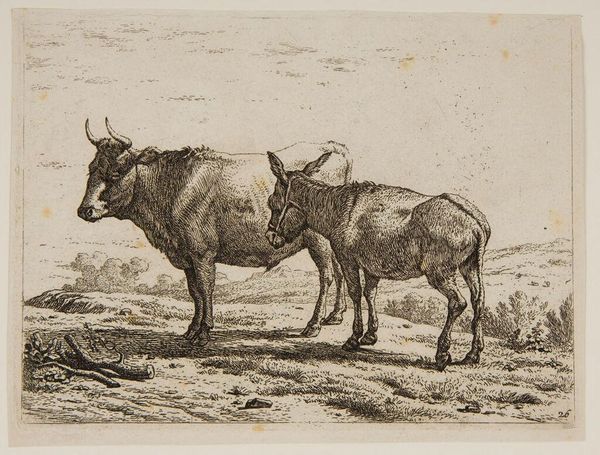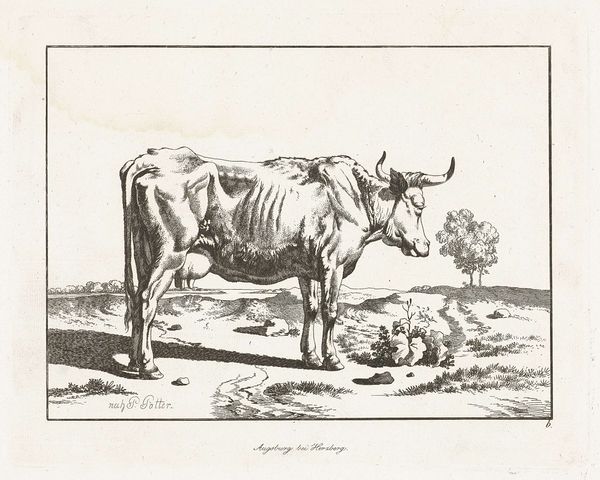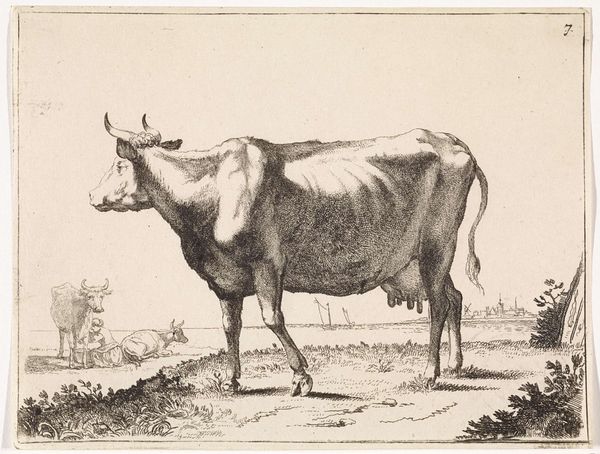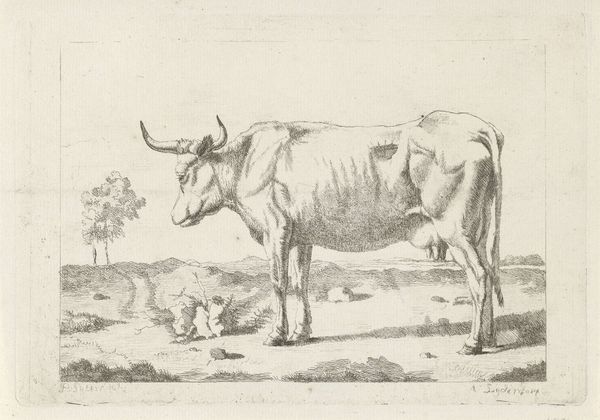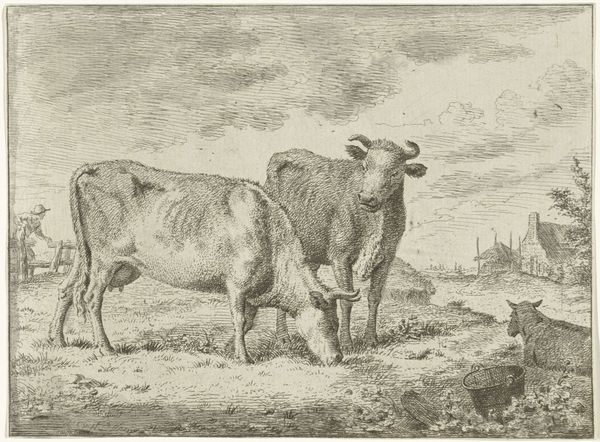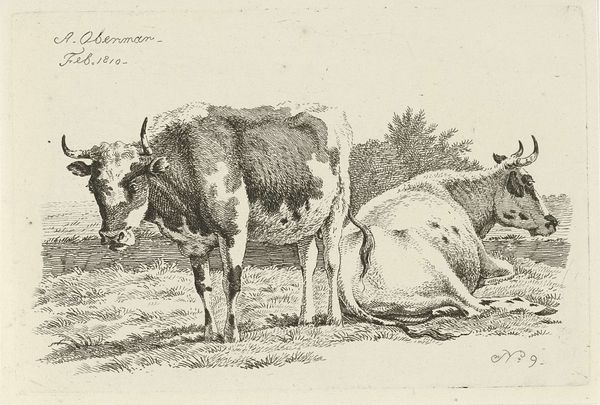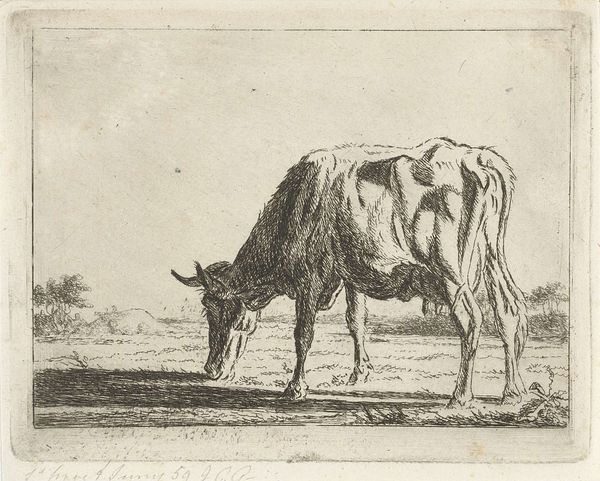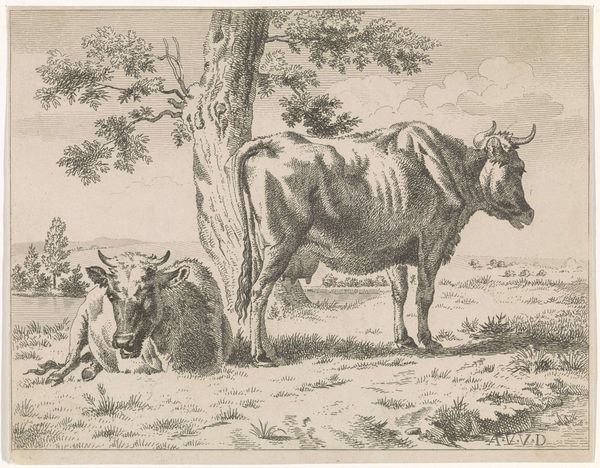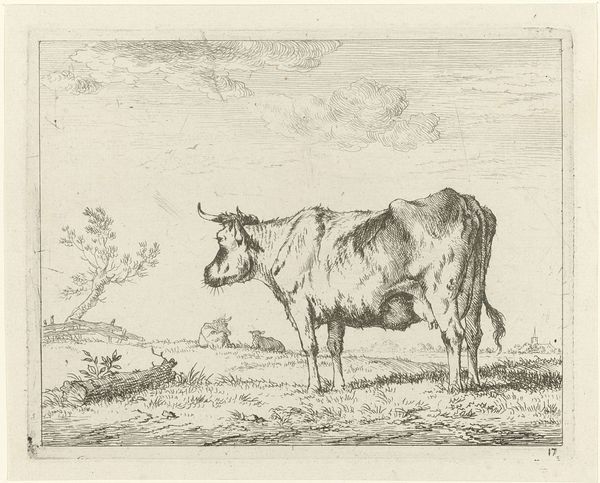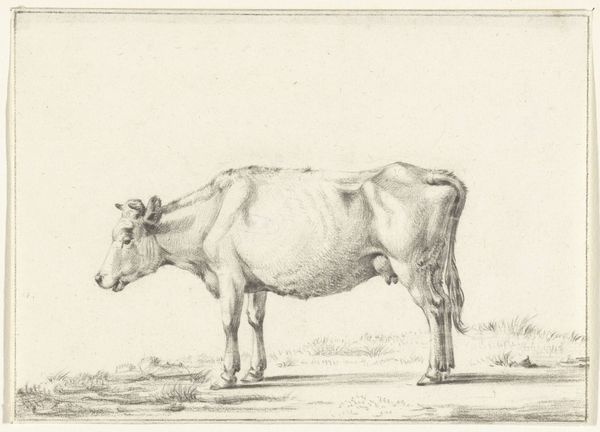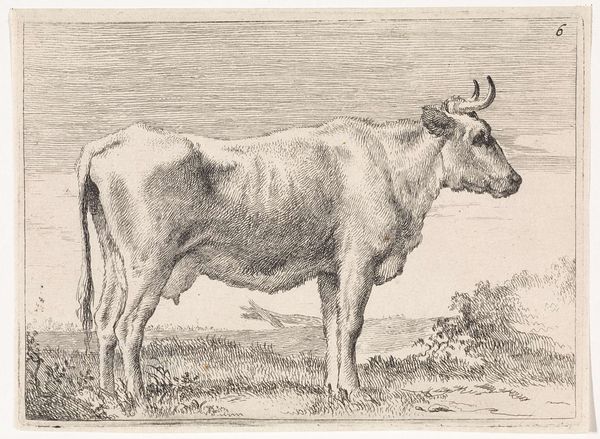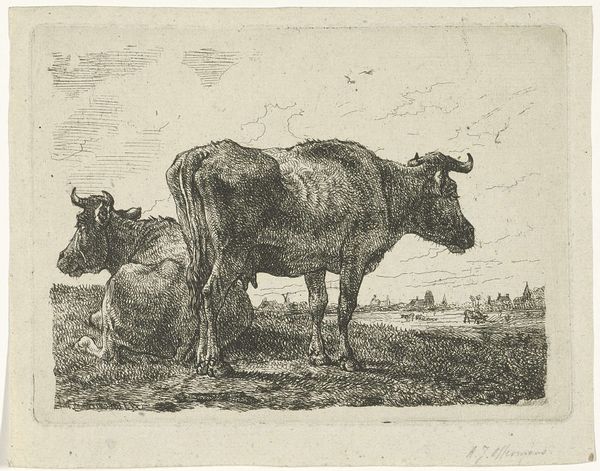
drawing, print, engraving
#
drawing
# print
#
landscape
#
engraving
#
realism
Dimensions: height 103 mm, width 129 mm
Copyright: Rijks Museum: Open Domain
Curator: Let's turn our attention to "Grazende koe naar links," or "Grazing Cow Facing Left," a landscape piece dating back to 1810, created by Wouter Johannes van Troostwijk. It's an engraving. Editor: Immediately, I’m struck by the seeming austerity of it. It’s quite minimalist, isn’t it? That monochrome engraving on paper renders the scene starkly. The solitary cow almost seems forlorn despite the open pasture. Curator: Perhaps the austerity contributes to the image's symbolic weight. Cows, across various cultures, represent nourishment, stability, even sacrifice. Their placid nature implies a connection to the land, a sort of humble continuity that speaks volumes about human reliance on the natural world. Editor: I'm interested in how that engraved line defines form here. You can almost feel the texture of the cow’s hide. It gives heft to an otherwise quite sparse composition, doesn't it? Look at how carefully the fur is rendered and think about the tools involved: metal, acid, the press... the layers of labor. Curator: The direction that the animal is facing matters, too. Facing left, in iconographic terms, sometimes suggests a looking back, a reflection on the past or a departure from established norms. Whether consciously intended or not, the gaze is turned away. Editor: Yes, but what would such departure entail? To me it appears that the image encapsulates rural labor as integral to its time. In other words, this represents the material sustenance that such an animal provided within a capitalist framework. Curator: Possibly so, but perhaps van Troostwijk asks us to consider the implications. What did the landscape represent for the Netherlands in 1810, occupied by the French? Maybe we find in the symbol of the grazing cow an idea of resilience or hope for a renewal of national identity. Editor: Well, whether its facing left or right, its physical and economic functions for the nation are irrefutable. Curator: An engraving like this, especially within the historical context, holds layers of significance far beyond the simply pastoral, as you astutely point out. Editor: True. I can only admire Troostwijk’s craftsmanship using modest means to illustrate something more complex.
Comments
No comments
Be the first to comment and join the conversation on the ultimate creative platform.
